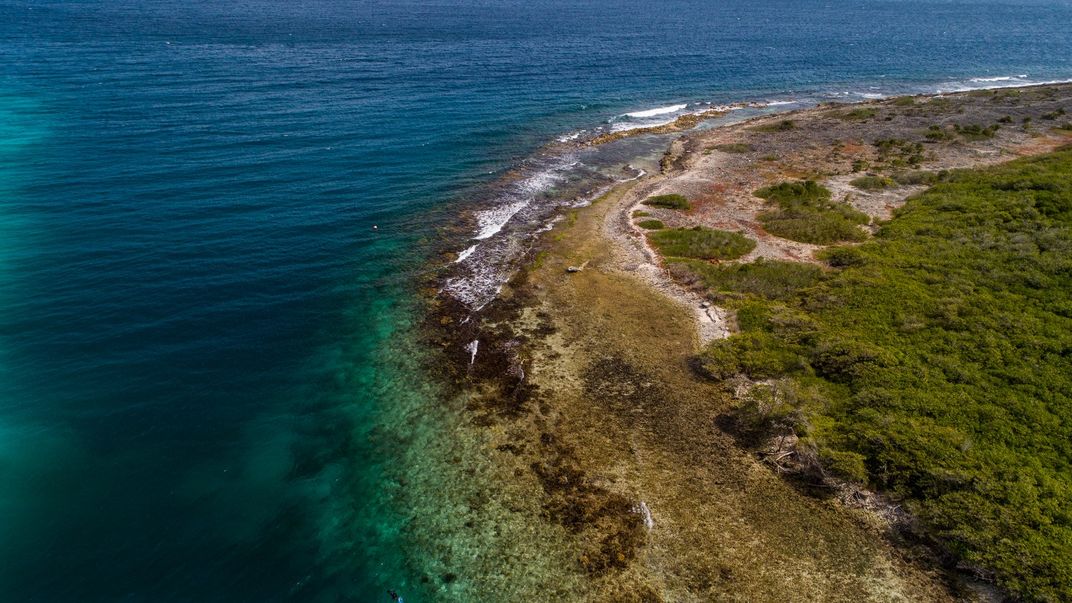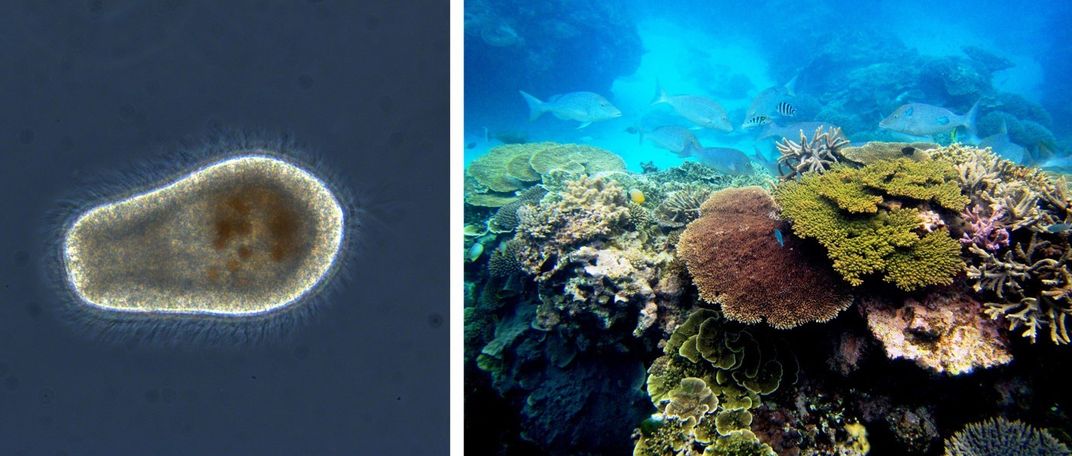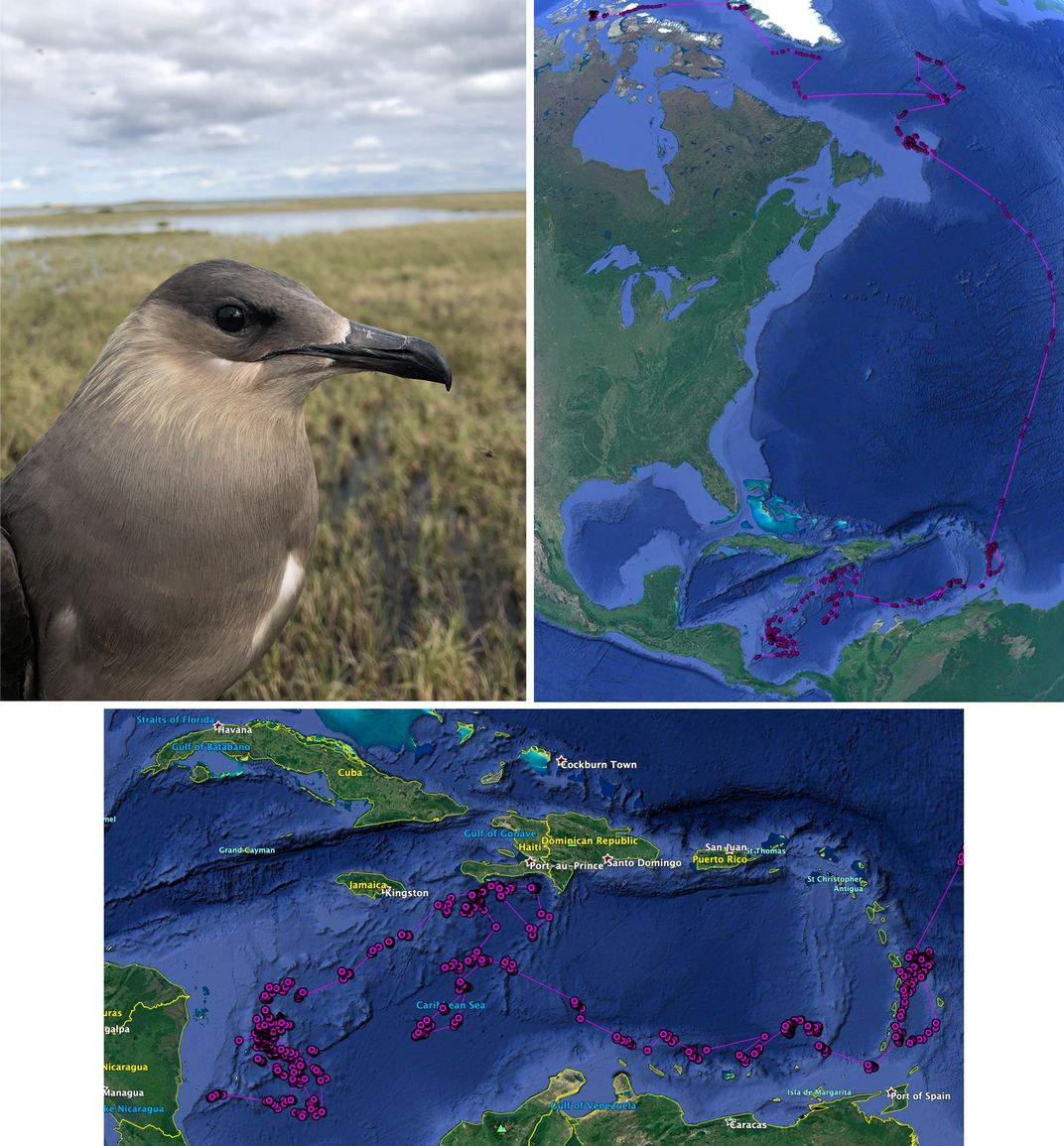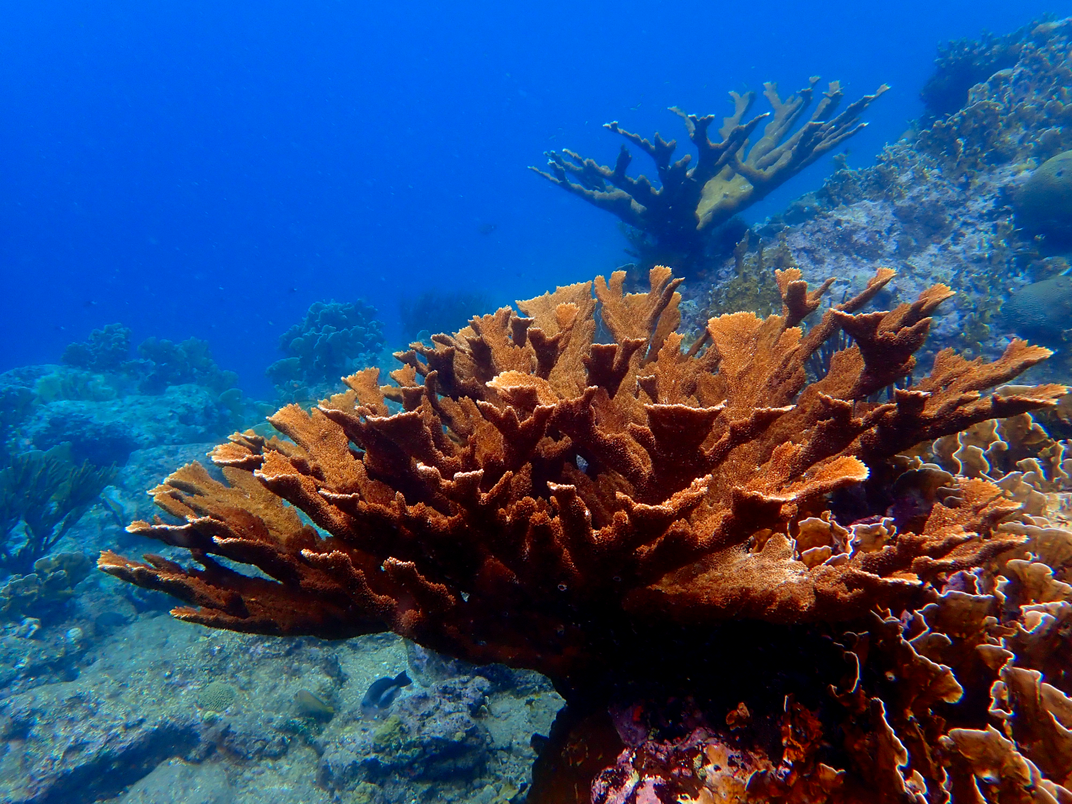NATIONAL ZOO AND CONSERVATION BIOLOGY INSTITUTE
Connecting Ocean Conservation from Sea to Sky
From deep trenches to shallow shores, water circulates in one world ocean

The increasing connectivity of our planet is undeniable. Modern technology allows us to communicate across cities, countries and continents. It enables scientists like us to collaborate to learn more about the Earth and how to protect it. But nature has its own built-in connections, no tech required. From the deepest trenches to the shallowest shores and across five basins – the Pacific, Atlantic, Indian, Southern and Arctic — water circulates in one interconnected system: the world ocean.
At the Smithsonian’s National Zoo and Conservation Biology Institute, our work to better understand and protect our world ocean spans from sea to sky. Our research shows how seemingly different animals — sessile coral and soaring seabirds — are connected to each other, to a changing climate and to ocean conservation.

Coral reefs are integral to life on Earth. They are nursery grounds for ¼ of all marine life, protect our cities and homes from storms, feed more than 14% of the human population and contribute billions of dollars to the global economy. Most importantly, they support the natural marine processes that produce a large proportion of all the oxygen on our planet. Yet, these critical ecosystems around the world are dying as climate change warms and acidifies the ocean.
At our marine laboratory in Hawaii, we research coral reproduction and biology to help these essential ocean ecosystems survive. As part of our work, we are creating frozen biorepositories of coral, fish, sea urchins, and the symbiotic algae that live within coral tissues. The biorepositories are similar to seed banks for plants, in that the frozen coral reef material can be stored safely for many years until needed. In the future, frozen coral sperm from the biorepository can be thawed and introduced to fresh coral eggs, adding new genes to corals populations. Frozen coral larvae could potentially help restore reefs to their former richness.
Reefs provide food, shelter and nursery grounds for marine life, but they also support the chemical pathways that help marine algae produce oxygen for all life on Earth. Our biorepositories will help secure the health and genetic diversity of coral reefs for the future, in turn helping the other animals that rely on reefs, like fish, mollusks, sea turtles — and even seabirds searching for meals.
Seabirds are arguably the most connected animals on the planet. They connect land to sea, the deep ocean to the coast, and the polar regions to the tropics. One species we study, the Arctic tern, makes the longest migration in the world. Arctic terns journey from the Arctic Ocean to the Southern Ocean and Antarctica, and some have been recorded traveling more than 80,000 kilometers (more than 49,700 miles) annually. Other seabirds called jaegers are acrobatic wonders and voracious predators. After nesting in the Arctic region of North America, these dipping and diving birds visit the coral reefs of Micronesia and the Caribbean; the Mid-Atlantic Ridge, a deep rift valley that is part of the largest underwater mountain range in the world; and the boundary currents off the coast of Africa, where deep, productive water wells up to the ocean’s surface.

Because these seabirds are often far from land, they are difficult to observe. By using small, solar-powered satellite tags, we have been able to track their full migrations, showing just how connected our marine ecosystems are across the globe. But it’s not easy to protect species that rely on various habitats and visit many countries during their lives. Regulations differ from place to place, and ocean health is impacted by both global policies and individual actions. Seabirds can be affected by plastic pollution, mistaking plastic debris floating in the water for food or becoming entangled in it. And some seabirds are incidentally caught by commercial fisheries at high levels; they can get entangled in fishing nets or may mistake bait on a hook for food and become caught themselves.
It’s even more challenging to protect animals that visit the high seas — those open ocean places that are beyond any one nation’s jurisdiction. Seabirds that nest in the Arctic and migrate to coral reefs are reliant on two of the most vulnerable ecosystems. Protecting these species and habitats from the impacts of climate change requires global cooperation.
Addressing the root causes of climate change — such as increasing human populations, an unsustainable harvesting of natural resources, and sizable carbon emissions — is key to ocean conservation. One direct way we can bolster climate action is by addressing inequities in health and education across the globe. Gender equity, civil liberties and justice are necessary ingredients for peace and prosperity, but they also have a direct impact on resource use and climate change. For example, when women and girls around the world have access to education, healthcare and financial resources, they have greater latitude to contribute to climate resilience as experts, leaders, policymakers, caretakers, educators, innovators and more.

Our work with corals and seabirds paints a picture of how marine ecosystems across the vast ocean are linked, and the many challenges that unfold from those connections. But we are also crafting solutions. Our work in coral cryopreservation is pioneering low-cost, high-impact reproductive technology to invest in a future for corals in a warming ocean. And our research demonstrating how seabirds connect ocean habitats has been presented at negotiations for a new global treaty for the sea, on the conservation and sustainable use of marine biological diversity of areas beyond national jurisdiction.
Change happens at the individual level too. We each have the power to choose sustainably caught seafood and to reduce marine pollution. By refusing single-use plastics; reducing, reusing and recycling what we consume; ensuring the trash we discard finds its way into a proper receptacle; and cleaning up our local rivers, beaches or watersheds, we can all contribute to saving our world ocean.


